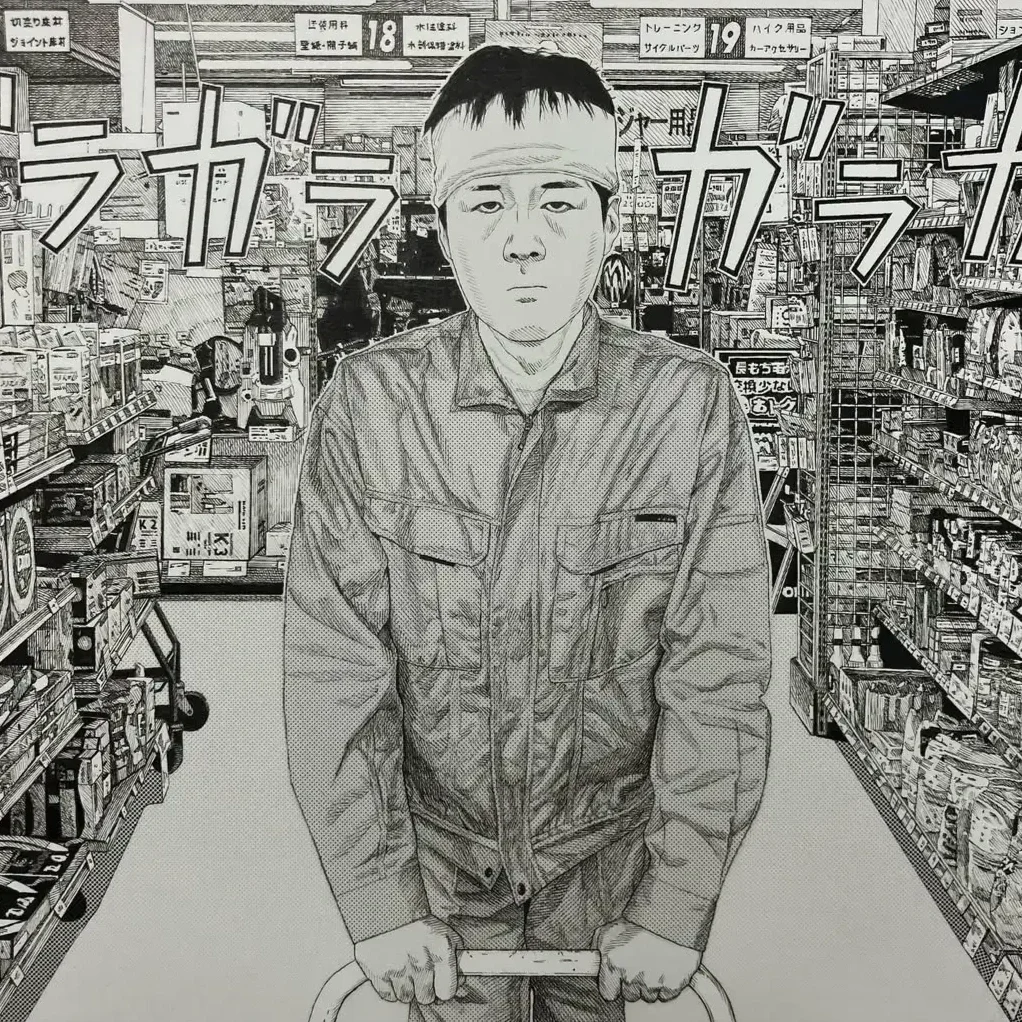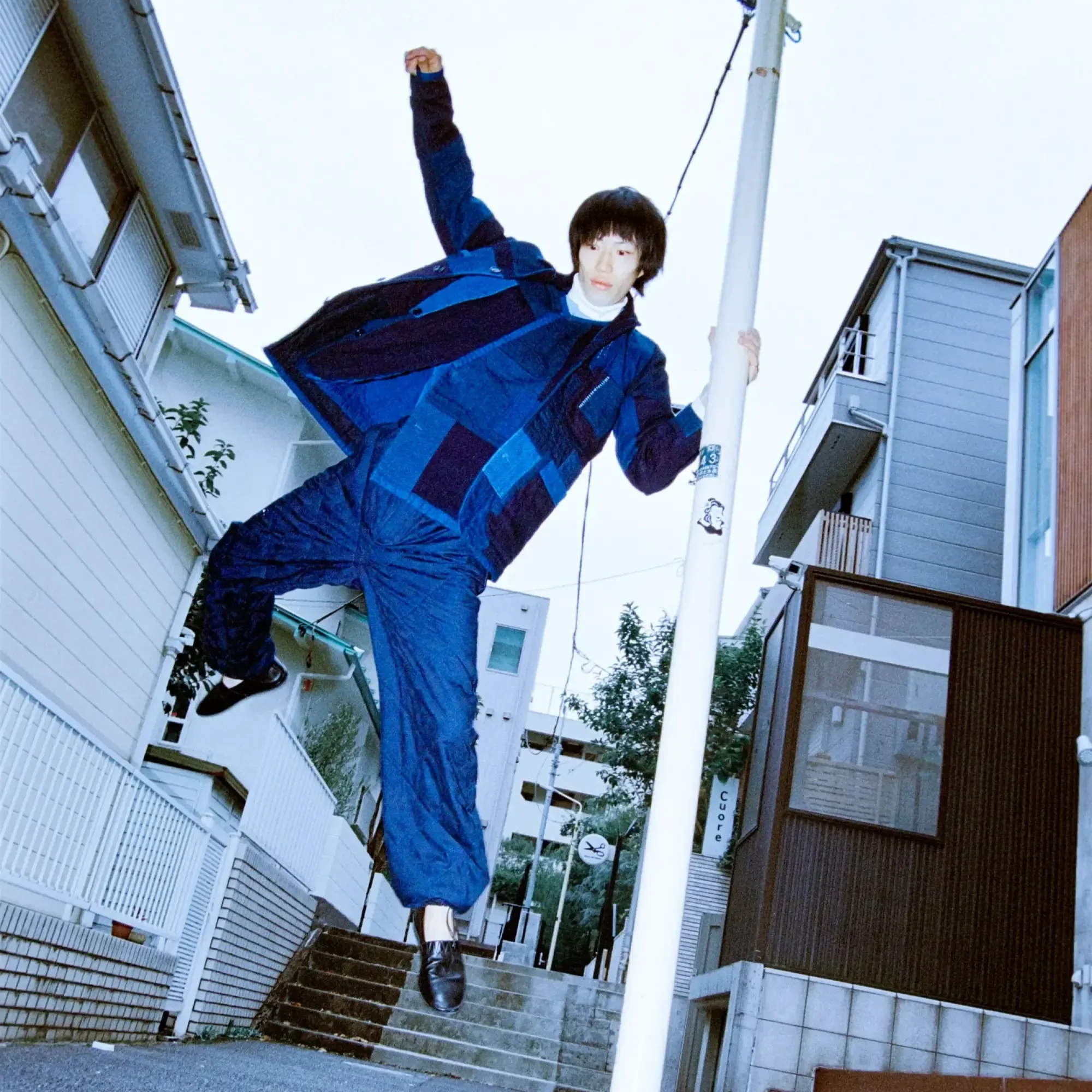Breaking Boundaries - Masaaki Yuasa and the Wild Grammar of Animation
Inu-Oh│© Toho
In the teeming landscape of contemporary Japanese animation, saturated with calibrated productions and franchises with standardized aesthetic canons, Masaaki Yuasa stands out as a unique figure, a free spirit whose work defies easy classification. Director, animator, and sometimes screenwriter, Yuasa defies established visual and narrative norms by literally animating the medium in its most organic and experimental dimension. His deliberately dissonant style, informed by both Japanese and Western influences, unravels the contours of graphic realism and linear narratives, inventing a wild, free, and fluid visual grammar.
From his seminal feature film Mind Game (2004) to more recent works such as Inu-Oh (2021) and Keep Your Hands Off Eizouken! (2020), Yuasa has continually explored animation as a field of visual and sensory experimentation, where bodies deform, spaces collapse, and narratives branch off. For him, movement is more than a narrative vehicle, it becomes an end in itself, a principle of vitality that resists any form of rigidity, whether graphic, ideological, or structural.
In this sense, Yuasa doesn't simply tell stories, he questions the expressive possibilities of animation, blurring its boundaries, and pushing its limits. Far from the quest for technical perfection or mimetic realism, his cinema embraces an aesthetic of instability, metamorphosis, and freedom. He is part of an alternative tradition, alongside directors like Isao Takahata and Mamoru Oshii, while forging a unique path, deeply rooted in a contemporary, joyously chaotic sensibility. And even if Yuasa seems to deconstruct everything, it is always for the benefit of a celebration of difference, of reverie and of possibility.
An Exceptional Graphic Signature
The first shock that Masaaki Yuasa's work evokes is visual. His instantly recognizable graphic style radically contrasts with the aesthetic conventions of dominant Japanese animation, where the readability of forms, the realism of proportions, or the finesse of lines often serve as a guarantee of quality. Contrary to this logic, Yuasa espouses an aesthetic of distortion, perpetual movement, and stylistic rupture, drawing as much from the experimental traditions of animation as from underground comics, psychedelia, and even children's illustration.
In his films, bodies stretch, faces dislocate, perspectives twist, and colors explode in bold combinations. Far from seeking a form of canonical beauty or visual coherence, he favors a raw, visceral, and primitive expressiveness. This choice reflects a deliberate artistic stance, which assumes that animation should not imitate reality but interpret, exaggerate, or transcend it.
This approach is evident in Mind Game, a true visual manifesto in which traditional animation techniques, computer-generated images, photographs, and live-action sequences intertwine without hierarchy. The film abolishes any stable visual continuity, each scene can change graphic style depending on the emotion or dramatic intensity. This logic of hybridization and constant mutation would become Yuasa's trademark, found both in the pop universe of Ping Pong the Animation (2014), where vivid, angular lines emphasize the psychological tension of the characters, and in the dreamlike strangeness of Night is Short, Walk on Girl (2017).
Ping Pong the Animation│© Tatsunoko Production
Another essential aspect of his graphic signature is his rejection of naturalistic fluidity. Contrary to the ideal of "invisible animation", which seeks to render movement as realistic and discreet as possible, Yuasa adopts a choppy, sometimes chaotic style, where transitions are abrupt and deformations spectacular. Moreover, his frequent use of flat tints of color, thick lines, and irregular geometric shapes gives his works a crafted dimension reminiscent of collages or naive paintings. This deliberately "unfinished" aesthetic breaks with the digital brilliance and visual uniformity of contemporary productions, affirming a taste for graphic risk, uneven lines, and flaws as expressive power.
Finally, it should be emphasized that this formal radicalism is never gratuitous. Each deformation, each visual exuberance, prolongs an emotion, intensifies an affect, and reveals an inner state. For Yuasa, graphic style is not an ornament, it is the very soul of the story, its most intimate vibration. It is a cinema where content and form are on the same level.
Fragmented Narratives and Structural Freedoms
While Masaaki Yuasa's visual aesthetic immediately captures attention, his storytelling style constitutes another major area of subversion. By freeing himself from classic narrative models (linearity, causality, a clearly defined dramatic arc), Yuasa asserts a structural freedom rare in the contemporary animation landscape. He conceives of narrative as a living, shifting, chaotic, often cyclical organism, where tonal shifts, unexpected forks in the road, and subterranean resonances take precedence over formal coherence or logical progression.
Mind Game offers a paradigmatic example. Adapted from a manga by Robin Nishi, the feature begins as an offbeat urban comedy, suddenly shifts into metaphysical fantasy following a murder, before drifting into an existential parable set behind closed doors in the belly of a whale. As the story unfolds, the boundaries between reality and hallucination collapse. The chronology stretches, repetitions and variations multiply, and the narrative becomes a flow of images and emotions that mirrors the protagonist's mental wanderings.
Mind Game│© Studio 4°C
This taste for narrative fragmentation is found in many of the director's works. In Kaiba (2008), a dreamlike science fiction series, identities are literally interchangeable, and spirits migrate from body to body, blurring any stability of point of view. The series borrows the structure of a road movie, but is constructed more like a succession of allegorical episodes where each stage questions notions of memory, love, or corporeality. Here again, the central plot is less important than the poetic or cruel micro-fictions that compose it.
The Tatami Galaxy (2010) pushes this logic of fragmented narrative even further. In each episode, the protagonist (an unnamed student) restarts his university life from the beginning, each time exploring a different possibility (joining a tennis club, a film club, a theater club, etc.). This looping structure, inspired by the concept of a parallel world, allows the very idea of destiny or a single narrative line to be deconstructed. The viewer thus witnesses a kind of existential kaleidoscope, where each variation reveals the hero's dead ends, fantasies, or regrets.
For Yuasa, narration becomes a space for play, but also a critical tool. By deconstructing the traditional mechanisms of fiction, he invites the viewer to adopt an active stance, to reconstruct meaning, and to experience the story as a material in motion.
This freedom is also expressed in his treatment of time. Whether cyclical (The Tatami Galaxy), dilated (Night is Short, Walk on Girl), or suspended (Lu Over the Wall), Yuasa rejects the idea of an irreversible linear time. The past returns to haunt the present, futures overlap, and memories reconfigure the ongoing action. Temporality becomes subjective, emotional, almost musical. In short, Yuasa shatters the usual narrative codes to construct a form of narrative-experience, fluid and open, capable of embracing the complexity of his characters' inner worlds.
Mutant Bodies, Unstable Worlds
One of the filmmaker's most audacious signatures lies in his ability to alter, distort, and fluidify the body and space. Far from representing reality, the animated image becomes a sensory laboratory, a testing ground where the limits of the body, perception, and the world itself are tested.
The human body, in particular, is at the heart of this destabilizing enterprise. It is traversed, deformed, dilated, thrown into crisis or explosion, in a logic that borders as much on the burlesque as the grotesque. In Mind Game, the resurrected protagonist, literally transformed by the experience of death, sees his anatomy bend to the will of the narrative. His skeleton disarticulates, his limbs extend, his face stretches to make palpable a state of exaltation and rebirth. Here, the body becomes the direct expression of emotions, impulses, and desires for transcendence.
This logic is part of a Japanese animation tradition that values fluidity and metamorphosis, from Astro Boy (1963) to Akira (1988), including the works of Isao Takahata. However, Yuasa pushes it to its extreme. In Lu Over the Wall (2017), a young, mischievous mermaid literally contaminates the world around her: human bodies soften, objects dance, and gravity itself seems to lose its control. The universe becomes a floating, permeable space, where physical rules can be suspended according to emotional impulses or narrative invention.
Lu Over the Wall│© Toho
This instability also applies to the environment. Sets transform, come to life, open or close, depending on the emotional needs of the characters. Space is subjective, shifting, and sometimes chaotic. In Kaiba, for example, the science fiction universe seems composed of hybrid organisms, soft structures, and bursts of color. The worlds traversed are fragmentary, absurd, often disturbing, as if they emerged from a deranged dream. Reality becomes unstable, haunted by the constant possibility of mutation.
By thus pushing the boundaries of representation, Yuasa also implicitly questions the human condition. What becomes of an individual when their body is no longer stable? When their environment dissolves or reconfigures itself at every moment? Ultimately, Yuasa's universe is not based on a logic of solid construction, but on that of infinite plasticity. Animated matter is never fixed: it vibrates, bends, twists, and opens itself to all possibilities. It embodies a world where anything can happen, as long as we are willing to let go.
A Chaotic Humanism
Behind Masaaki Yuasa's formal exuberance and visual experimentation lies a profoundly humanist thought, albeit one that resists any form of dogma or closed system. Far from reveling in chaos for its own sake, the Japanese filmmaker uses narrative and graphic instability as a vehicle for an open, empathetic, and free outlook on existence. It is a chaotic humanism, a confidence in the impulses of life, unforeseen encounters, and winding trajectories, contrary to any imposed or fixed order.
This vision is first manifested in the way Yuasa conceives his characters. They are never archetypes, but ambivalent beings, often at odds with social norms. Each of them is riddled with contradictions, driven by desires for transformation. Identity is never a fixed given, but a movement, a process, a series of adjustments and new beginnings.
From this perspective, plots are often disjointed, leaving room for digressions and unexpected developments. In The Tatami Galaxy, the cyclical repetition of episodes illustrates this ever-renewed quest for meaning, where salvation comes not from success but from the joyful acceptance of imperfection. Wandering, far from being a failure, becomes a mode of existence in its own right.
This philosophy of the movement is also embodied in a marked defiance of hierarchies, institutions, or disciplinary norms. Yuasa's world is pervaded by an anti-authoritarian energy, a desire for salutary disorder. The boundaries between genders, species, and generations are constantly blurred. Childhood and old age, masculine and feminine, reality and imagination intertwine with great fluidity, abolishing any logic of domination or strict separation. In Japan Sinks: 2020, a dark adaptation of Sakyo Komatsu's novel, the chaos of the natural disaster paradoxically reveals the capacity of individuals to help each other, to forge new bonds outside of traditional state or family structures.
This rejection of the rigid order, however, is not without tenderness. Yuasa doesn't seek to demolish everything, but to show that there are other ways of living, loving, and telling stories. His work gives voice to the marginalized, the dreamers, the clumsy, those who don't fit into any box. Humor, often absurd, plays a central role in this approach. It disarms power discourses, mocks rigidities, while allowing a form of emotional resilience. Laughter, for Yuasa, is an act of resistance.
Night Is Short, Walk On Girl│© Toho
His work embodies a freedom rare in the contemporary landscape of Japanese animation. Rejecting dominant aesthetic conventions, he develops a visual and dramaturgical language that is unique, fluid, fragmented, and profoundly singular. His animation doesn't seek to smooth the world but to explore its rough edges, its excesses, and its fertile tensions.
Through mutating forms and fragmented narratives, Yuasa develops a vision of animated cinema as a limitless field of experimentation, a space where bodies, identities, and worlds can constantly reinvent themselves. This approach embodies a true ethic of vision, one that embraces the unexpected, celebrates differences, and considers humanity as a shifting constellation of desires, doubts, and impulses. Masaaki Yuasa's cinema is a vivid reminder that animation is a radically free art, one that disrupts and disconcerts, but which, in turn, broadens our perception of what is possible.











An emotional blueprint evolved into wearable architecture.